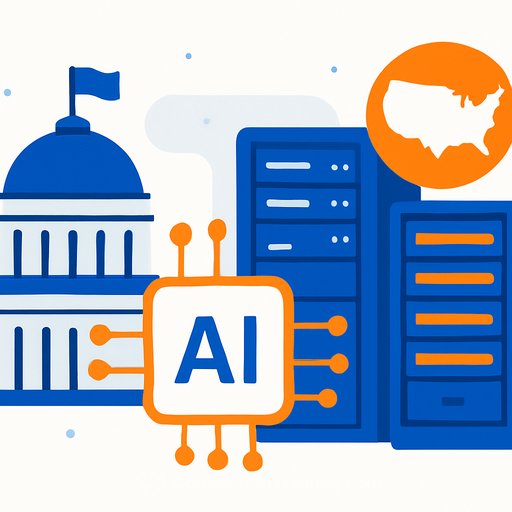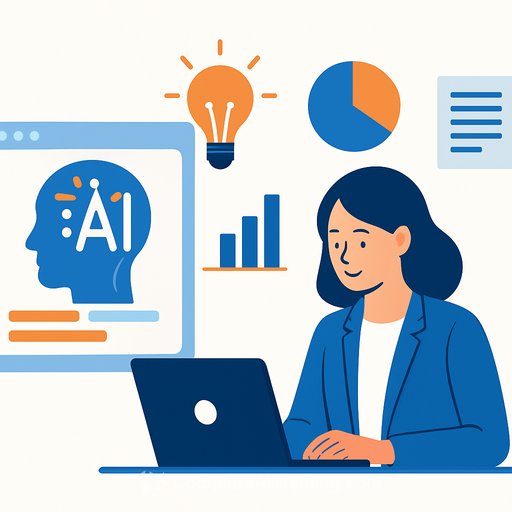Odisha to integrate AI tools in government operations: What it means for you
Bhubaneswar: The Odisha government has announced a plan to integrate Artificial Intelligence (AI) tools across departments. The goal is clear: improve administrative efficiency and upgrade skills across the workforce.
For government employees, this means new ways of working, new tools at your desk, and fresh opportunities to build high-demand skills. Below is a practical roadmap to help you prepare and make the most of it.
What this means for government employees
- Routine tasks like file movement, data entry, and document drafting may shift to assisted workflows.
- Citizen services could see faster turnaround time with AI-assisted triage and responses.
- Data-informed decisions will become standard in planning, audits, and service delivery.
- Training and certification will matter for promotions and role mobility.
High-impact use cases departments can pilot first
- Document processing: auto-summarise files, extract key fields from PDFs, classify letters and RTI requests.
- Citizen support: chat or IVR assistants for FAQs, application status, and scheme eligibility checks.
- Grievance management: smart routing, duplicate detection, risk scoring for escalation.
- Welfare and subsidies: anomaly signals for leakages, duplicate beneficiaries, and outlier patterns.
- Inspections and field work: route optimisation, photo-based verification, checklist compliance.
- Disaster readiness: faster situation reports, multilingual alerts, and logistics planning support.
90-day starter plan for any department
- Days 1-15: Pick 1-2 use cases; map the process; define success metrics (e.g., time saved per file).
- Days 16-30: Run a no-code pilot with sample data; keep humans in the loop for approvals.
- Days 31-60: Expand to a controlled production group; set up audit logs and access controls.
- Days 61-90: Measure outcomes; draft SOPs; plan training for wider rollout.
Skills you will need (and how to build them)
- Prompting and review: clear instructions, fact checks, and version control.
- Data literacy: basic spreadsheets, cleaning, simple dashboards, and chart interpretation.
- Process design: where to add AI, where human approval is mandatory.
- Security basics: handling sensitive data, redaction, and permissions.
For policy context and case studies, see the Government of India's AI portal IndiaAI.
For hands-on learning paths by role, explore curated options at Complete AI Training: Courses by Job.
Guardrails: policy, privacy, and ethics
- Human-in-the-loop: officers approve outputs for decisions that affect rights and benefits.
- Data minimisation: use only what's needed; redact personal identifiers where possible.
- Security: enforce role-based access; log every action; protect model prompts and outputs.
- Fairness and quality: test for bias; sample-check outputs across languages and regions.
- Transparency: label AI-generated notes; record the tool and model version used.
- Continuity: define fallbacks if tools fail; keep manual SOPs ready.
Procurement checklist for AI tools
- Data ownership: your data stays yours; no vendor training on government data without consent.
- Security posture: certifications, encryption, incident response, data residency options.
- Quality and audit: accuracy benchmarks, bias tests, and complete activity logs.
- Human control: configurable approval steps and clear override paths.
- Cost clarity: per-user, per-token, or per-API pricing; predictable caps and monitoring.
- Exit plan: data export, model portability, and contract clauses to avoid lock-in.
How to measure success
- Process speed: average file time, backlog reduction, first-contact resolution rate.
- Quality: error rates, rework percentage, citizen satisfaction scores.
- Cost: hours saved, paper reduction, vendor spend vs. value delivered.
- Compliance: audit pass rates, data breaches (target: zero), accessibility coverage.
Change management: make adoption stick
- Start small: pilot in one unit; publicise wins and lessons learned.
- Role clarity: define who reviews, who approves, and who maintains the system.
- Training cadence: short weekly sessions; job aids; sandbox practice.
- Feedback loop: collect staff and citizen feedback; update SOPs monthly.
Quick answers to common questions
Will AI replace my job?
It will change tasks, not the need for accountability. Officers will review and approve decisions; AI assists with speed and drafts.
Is my data safe?
Use approved tools with clear data policies, redaction, and strict access controls. Avoid pasting sensitive data into unapproved apps.
What should I learn first?
Prompt basics, spreadsheet skills, and how to review AI outputs for accuracy and bias.
Next steps
- Nominate a use case in your section this week and define a clear metric.
- Set up a small pilot with audit logs and human approval steps.
- Enroll in one learning path and practice on real (non-sensitive) tasks.
If you want structured options to upskill, browse latest AI courses.
Odisha's push can make daily work simpler and service delivery faster. Start with one process, measure it, and build from there.
Your membership also unlocks:





